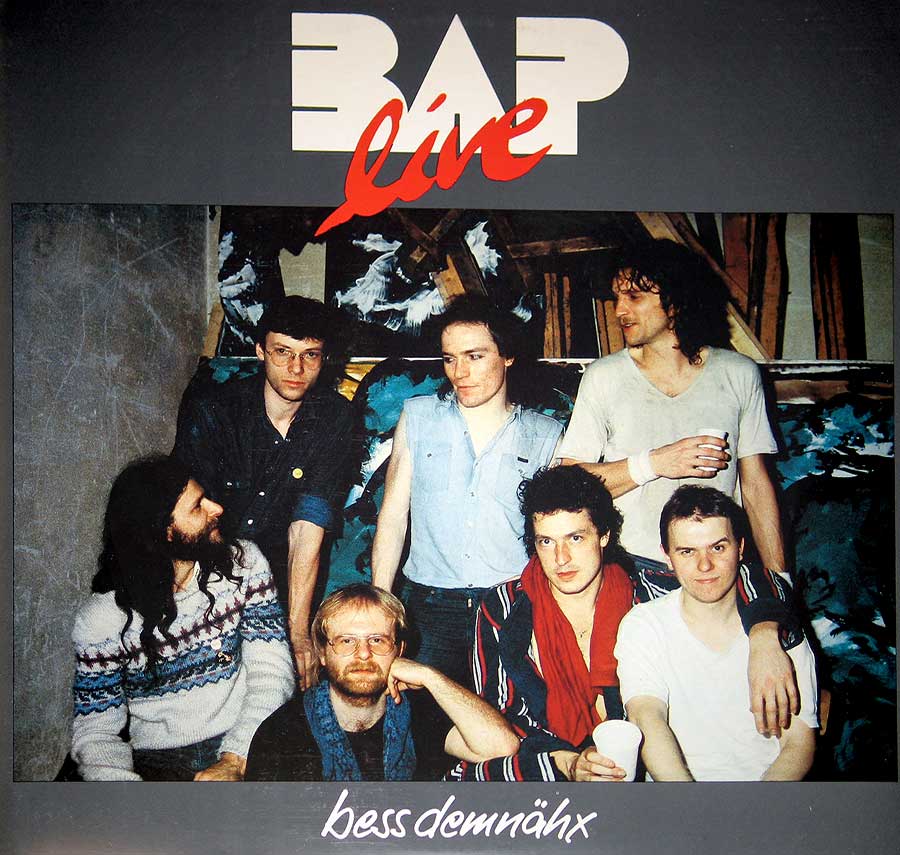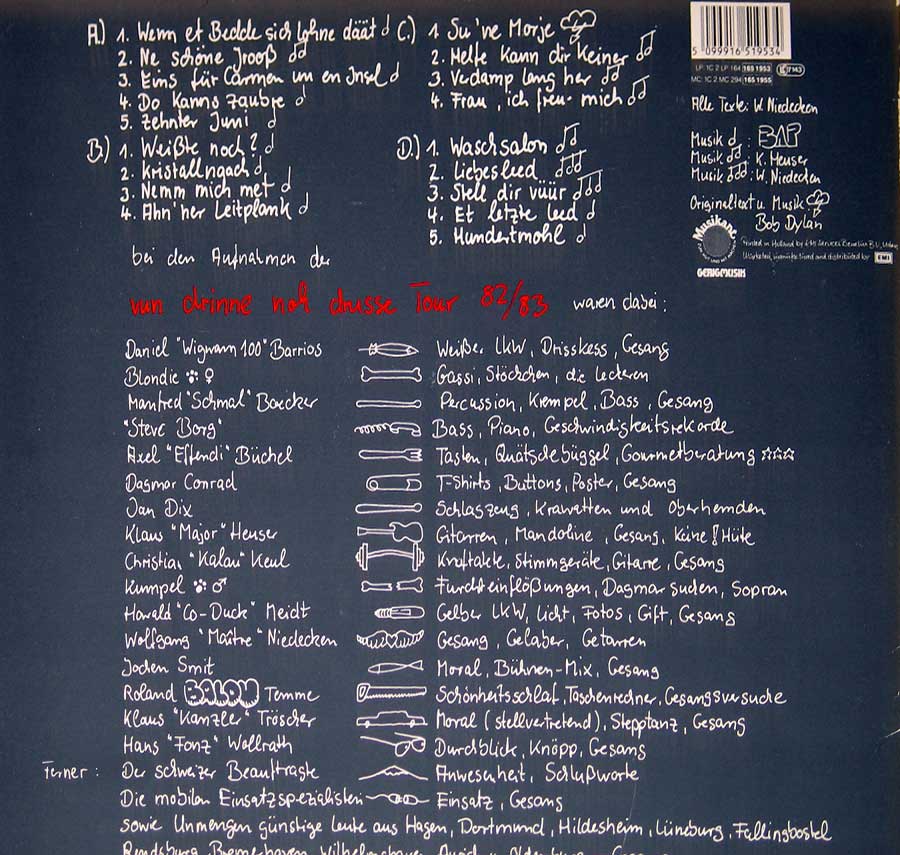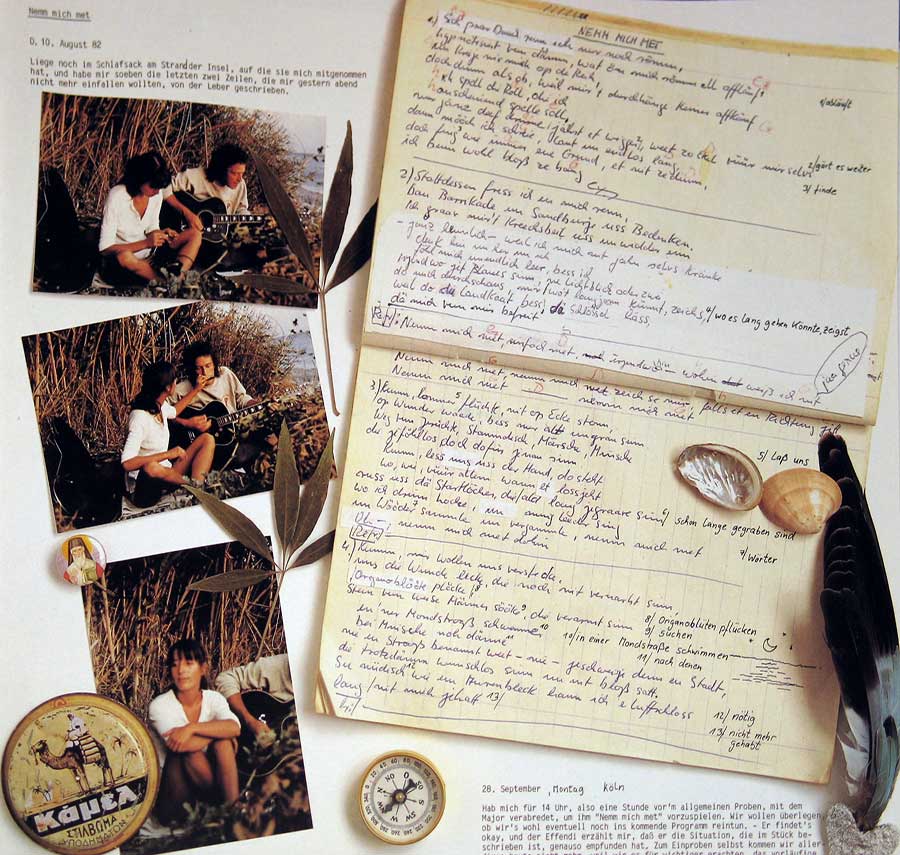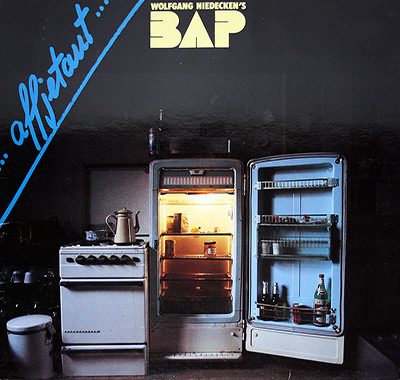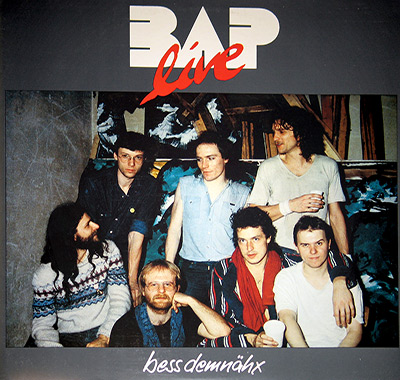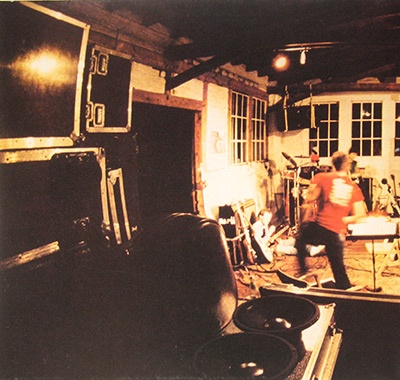Back cover featuring artwork from the BAP Live LP.
The back cover of BAP’s double LP "Bess demnähx" is a visually dense collage of handwritten text and quirky, symbolic illustrations. Set against a dark navy background, the entire layout is rendered in white ink with red highlights for emphasis, giving it a raw, intimate, and almost zine-like feel.
The upper left portion lists the four album sides labeled A to D, each with four or five track titles written in casual script. Musical note icons are scattered next to select songs. To the right, performance and songwriting credits appear in block letters. The main contributors—Wolfgang Niedecken, Klaus Heuser, and the band BAP—are credited with lyrics and music. A note indicates that original material by Bob Dylan is included.
Below the tracklist, a bold red phrase reads "vun drinne noh drusse Tour 82/83", identifying the live recordings as part of BAP's 1982–83 tour. Below this, a long list of names appears—band members, tour crew, and contributors. Each person is paired with playful, often humorous illustrations: arrows, safety pins, band-aids, and other icons symbolizing their roles.
For instance, symbols like guitars, microphones, trucks, light bulbs, and film rolls appear beside names, representing technicians, photographers, or drivers. The list is diverse and includes names like "Daniel 'Wigwam 100' Barrios", "Jan Dix", "Blondie", and "Klaus 'Major' Heuser", among many others. Descriptive terms follow in German, outlining responsibilities ranging from stage mix, logistics, moral support, to T-shirt design.
The lower right corner notes cities like Düsseldorf, Dortmund, Hildesheim, and Hamburg—presumed recording locations. There's also a barcode, a GEMA logo, and production details, keeping the spirit of the band’s do-it-yourself ethos intact while still meeting album publishing requirements.
